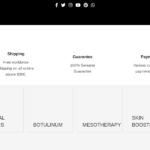Why is the trust score of s3.thr1.sotoon.ir high?
The provided content appears to be an XML file, specifically a response from an Amazon S3 (Simple Storage Service) API call. The XML structure indicates that it’s a response to a request to list all the buckets (containers for objects) in an Amazon S3 account. Here’s a breakdown of the content:
: This line specifies the XML namespace for the Amazon S3 API version 2006-03-01.
: This section contains information about the owner of the Amazon S3 account.
anonymous: The ID of the account owner is listed as ‘anonymous’. This might be a placeholder or an actual account identifier.
: The display name of the account owner is not provided in this response.
: This section is empty, indicating that there are no buckets (containers) listed in the response. If there were, they would be listed within … tags.
: This is the closing tag for the element, marking the end of the XML response.
Based on this content, it seems that the response is from a request to list all the buckets in an Amazon S3 account. The absence of any bucket names within the … tags suggests that either there are no buckets in the account or the account does not have permission to list them.
Regarding the safety of the content, the XML response itself does not pose any direct security risk. However, it’s important to consider the context in which this response is being used. If it’s part of a web application or a system that interacts with Amazon S3, the security and access control mechanisms around this API call and the handling of the response are crucial.
Here are some general considerations for handling API responses like this:
Access Control: Ensure that the API call to list buckets is properly authenticated and authorized. Only authorized users or systems should be able to make this call.
Error Handling: If the API call fails or returns unexpected results, the application should handle errors gracefully and provide appropriate feedback to users or administrators.
Data Protection: If the response includes sensitive information, such as bucket names or account details, it should be handled and stored securely.
Monitoring and Logging: API calls and their responses should be logged and monitored for security and operational purposes.
These considerations are important for the safe and secure use of any API, including the Amazon S3 API. If you’re working with this API in a development or production environment, it’s advisable to review the relevant documentation and best practices for using the API securely.
If you have specific concerns or questions about the use of the Amazon S3 API or the content of the XML response, feel free to provide more details, and I can offer more targeted advice.”
the reasons behind this review :The provided content appears to be an XML file, specifically a response from an Amazon S3 (Simple Storage Service) API call. The XML structure indicates that it's a response to a request to list all the buckets (containers for objects) in an Amazon S3 account. Here's a breakdown of the content:<br /> <br /> <listallmybucketsresult xmlns="http://s3.amazonaws.com/doc/2006-03-01/">: This line specifies the XML namespace for the Amazon S3 API version 2006-03-01.<br /> <br /> <owner>: This section contains information about the owner of the Amazon S3 account.<br /> <id>anonymous</id>: The ID of the account owner is listed as 'anonymous'. This might be a placeholder or an actual account identifier.<br /> <displayname/>: The display name of the account owner is not provided in this response.<br /> </owner><br /> <buckets/>: This section is empty, indicating that there are no buckets (containers) listed in the response. If there were, they would be listed within <buckets>...</buckets> tags.<br /> </listallmybucketsresult>: This is the closing tag for the <listallmybucketsresult> element, marking the end of the XML response.<br /> <br /> Based on this content, it seems that the response is from a request to list all the buckets in an Amazon S3 account. The absence of any bucket names within the <buckets>...</buckets> tags suggests that either there are no buckets in the account or the account does not have permission to list them.<br /> <br /> Regarding the safety of the content, the XML response itself does not pose any direct security risk. However, it's important to consider the context in which this response is being used. If it's part of a web application or a system that interacts with Amazon S3, the security and access control mechanisms around this API call and the handling of the response are crucial.<br /> <br /> Here are some general considerations for handling API responses like this:<br /> <br /> Access Control: Ensure that the API call to list buckets is properly authenticated and authorized. Only authorized users or systems should be able to make this call.<br /> Error Handling: If the API call fails or returns unexpected results, the application should handle errors gracefully and provide appropriate feedback to users or administrators.<br /> Data Protection: If the response includes sensitive information, such as bucket names or account details, it should be handled and stored securely.<br /> Monitoring and Logging: API calls and their responses should be logged and monitored for security and operational purposes.<br /> These considerations are important for the safe and secure use of any API, including the Amazon S3 API. If you're working with this API in a development or production environment, it's advisable to review the relevant documentation and best practices for using the API securely.<br /> <br /> If you have specific concerns or questions about the use of the Amazon S3 API or the content of the XML response, feel free to provide more details, and I can offer more targeted advice.
Threat Analysis
High RiskVirusTotal Security Scan 1/195 detections
Google Safe Browsing Safe
Overall Risk Assessment
Security Recommendations:
- Threat categories detected: malicious
- Google Safe Browsing reports no issues for this domain.
- Review and clean any flagged content or links before marking this site as safe.
| Positive Points | Negative Points |
|---|---|
Website content is accessible No spelling or grammatical errors in site content High review rate by AI | Archive is new Whois data is hidden |
How much trust do people have in s3.thr1.sotoon.ir?
Domain age :
unknow
WHOIS Data Status :
Hidden
Category :
Technology
Website Rank :
N/A
Age of Archive :
2 year(s) 11 month(s) 13 day(s)
SSL certificate valid :
Valid
SSL Status :
Low - Domain Validated Certificates (DV SSL)
SSL issuer :
Let's Encrypt
IP : 78.111.1.74
ISP : AS41227 Insightometrics B.V.
Country : IR
IP : 78.111.1.53
ISP : AS41227 Insightometrics B.V.
Country : IR
IP : 78.111.1.52
ISP : AS41227 Insightometrics B.V.
Country : IR
IP : 78.111.1.54
ISP : AS41227 Insightometrics B.V.
Country : IR
Target : i.ns.sotoon53.com
IP : 185.166.104.53
ISP : AS202319 Hezardastan Unit Cloud Computing PJSC
Country : NL
Target : ns.sotoon53.com
IP : 194.34.163.53
ISP : AS202319 Hezardastan Unit Cloud Computing PJSC
Country : NL
How to Stay Safe Online
Here are 10 basic security tips to help you avoid malware and protect your devices.
Use a good antivirus and keep it up-to-date
It's essential to use a quality antivirus to stay ahead of cyber threats. Free solutions are available for all devices that protect against malware and viruses.
Keep software and operating systems up-to-date
Software companies regularly update platforms to fix vulnerabilities. Update your operating system, browsers, and apps whenever prompted.
Be careful when installing programs and apps
Pay close attention to installation options and uncheck agreements for toolbars and add-ons. Take care in every stage of the process.
Install an ad blocker
Advertisements can sometimes spread malware. Use ad blockers that stop malicious ads, images, and other content that antivirus might miss.
Be careful what you download
Research before downloading freeware or apps that might carry hidden malware. Be especially cautious with torrent files.
Be alert for people trying to trick you
Stay vigilant against phishing and social engineering. Remember that banks never ask for passwords, and familiar names don't make messages trustworthy.
Back up your data
Back up frequently and verify that backups can be restored. Use external drives disconnected from your computer or trusted cloud services.
Choose strong passwords
Use unique passwords for all accounts. Avoid personal information and enable two-factor authentication (2FA) when possible.
Be careful where you click
Exercise caution with links or attachments from unknown sources. These could contain malware or phishing scams.
Don't use pirated software
Avoid key generators, file sharing programs, and cracked software. These are often compromised with malware or crypto-miners.
This website was last scanned on October 28, 2025

cerofilm.club
The website www.cerofilm.club appears to be a scam. Several red flags indicate this: New Domain: The domain is only 1 month and 10 days old. Scammers often create new websites...

friendztravel.com
https://friendztravel.com redirected to https//www.friendztravel.com during the time we crawled it. The website content you provided contains several red flags that are commonly associated with scam or fraudulent websites. Here are...

kbeautypharm.com
The website kbeautypharm.com appears to be a high-risk site. Here are the reasons: 1. Suspicious Product Range: The website offers a wide range of medical products, including dermal fillers, botulinum,...

